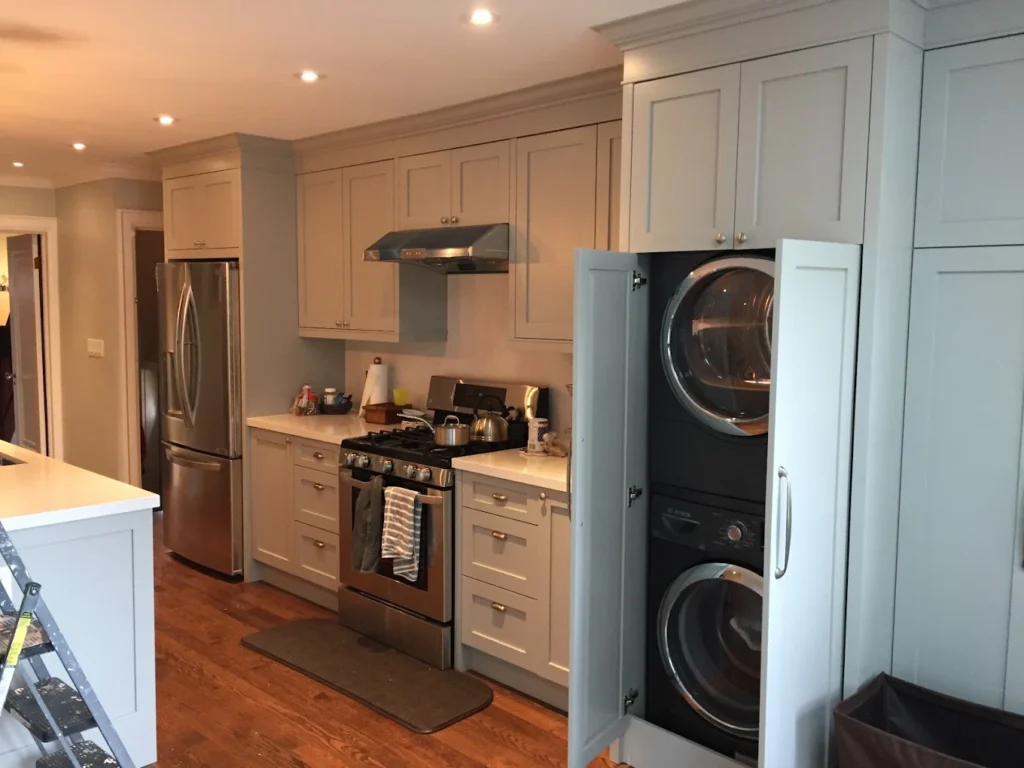A kitchen isn’t just a place to cook—it’s the heart of every home. It’s where families gather, meals are shared, and memories are made. Over time, however, kitchens can become outdated, inefficient, or simply no longer match your lifestyle. That’s where kitchen remodeling comes in. Whether you’re aiming for a sleek modern design or a cozy traditional feel, a kitchen remodel can enhance both your home’s value and your daily living experience.
In this guide, we’ll explore everything you need to know about kitchen remodeling, from planning and design to materials, costs, and expert tips for success.
Why Kitchen Remodeling Is Worth It
A well-planned kitchen remodel is one of the most valuable home improvement projects you can invest in. Here’s why homeowners choose to remodel their kitchens:
1. Increase Home Value
Kitchen remodels consistently deliver one of the highest returns on investment (ROI) in real estate. A modern, functional kitchen can increase your property’s market appeal and resale value significantly.
2. Improve Functionality and Efficiency
If your kitchen layout feels cramped or inconvenient, remodeling allows you to reconfigure the space. You can add more counter space, storage, or better traffic flow to make everyday cooking easier.
3. Enhance Aesthetic Appeal
Outdated cabinets, worn-out countertops, and old flooring can make a kitchen feel tired. A remodel gives you the opportunity to create a space that reflects your personal style—whether that’s rustic farmhouse charm, sleek contemporary, or timeless elegance.
4. Upgrade Appliances and Energy Efficiency
Modern appliances are not only stylish but also energy-efficient. Upgrading to new models can reduce your utility bills and your environmental footprint.
5. Boost Comfort and Safety
Adding better ventilation, improved lighting, or slip-resistant flooring can make your kitchen safer and more comfortable for everyone in your home.
Planning Your Kitchen Remodel
A successful kitchen remodeling project starts with careful planning. Here’s how to approach it step by step:
1. Set a Realistic Budget
Determine how much you can comfortably spend. On average, kitchen remodels can range from modest upgrades at $10,000–$20,000 to high-end renovations that exceed $50,000. Always set aside 10–15% for unexpected costs.
2. Identify Your Remodeling Goals
Ask yourself what you want to achieve: more storage, better workflow, updated aesthetics, or improved energy efficiency? Defining your priorities helps guide design decisions.
3. Choose a Layout That Works for You
Common kitchen layouts include:
- L-Shaped: Ideal for maximizing corner space.
- U-Shaped: Great for larger kitchens with ample storage.
- Galley: Perfect for small spaces, offering efficient workflows.
- Island Kitchen: Adds workspace and social interaction areas.
4. Select Quality Materials
Durability and design go hand-in-hand in kitchen remodeling. Some popular choices include:
- Countertops: Quartz, granite, or marble.
- Cabinetry: Solid wood, MDF, or laminate.
- Flooring: Tile, hardwood, or luxury vinyl.
- Backsplash: Ceramic tile, glass, or stainless steel.
5. Hire Professional Kitchen Remodelers
DIY remodeling can be tempting, but hiring experienced contractors ensures structural integrity, design expertise, and compliance with local building codes. Professional remodelers can help you avoid costly mistakes and finish your project on time.
Design Trends in Modern Kitchen Remodeling
Keeping up with current design trends can give your kitchen a fresh and timeless look. Here are some of the most popular ideas in 2025:
- Open-Concept Layouts: Combine your kitchen with dining or living spaces for better flow and interaction.
- Smart Kitchens: Integrate smart appliances, lighting, and voice-controlled features for convenience.
- Two-Tone Cabinets: Mix darker lower cabinets with lighter uppers for visual contrast.
- Quartz Countertops: Durable, low-maintenance, and available in many styles.
- Minimalist Aesthetics: Clean lines, neutral tones, and clutter-free designs.
- Sustainable Materials: Bamboo flooring, recycled glass countertops, and energy-efficient appliances.
Common Mistakes to Avoid
Even with the best intentions, kitchen remodels can go wrong without proper planning. Avoid these common pitfalls:
- Ignoring workflow (the kitchen triangle): The sink, stove, and refrigerator should form an efficient triangle.
- Choosing style over function: A beautiful design means nothing if it’s not practical.
- Underestimating storage: Plan for sufficient cabinets and drawers.
- Skipping ventilation: Good airflow is essential for odor and moisture control.
- Going over budget: Track every expense and avoid last-minute design changes.
How Long Does a Kitchen Remodel Take?
The timeline depends on the scope of your project:
- Minor remodels: 2–4 weeks
- Mid-range remodels: 6–10 weeks
- Major renovations: 3–5 months
Proper planning and professional scheduling can help minimize delays.
The Cost of Kitchen Remodeling
The cost of a kitchen remodel varies based on size, materials, and customization level. Here’s a general breakdown:
| Type of Remodel | Estimated Cost Range |
|---|---|
| Small Kitchen Remodel | $10,000 – $25,000 |
| Mid-Range Remodel | $25,000 – $50,000 |
| High-End Remodel | $50,000 – $100,000+ |
Investing in quality materials and craftsmanship pays off in durability, aesthetics, and home value.
Final Thoughts
A kitchen remodeling project is one of the most rewarding investments you can make in your home. It improves functionality, boosts property value, and creates a space that truly fits your lifestyle. Whether you’re updating fixtures or doing a complete redesign, careful planning and professional help can make all the difference.




